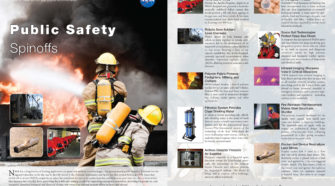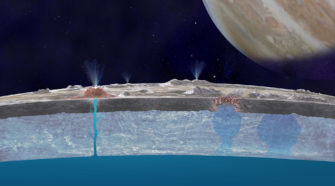NASA Spinoffs for Public Safety
NASA has a long history of finding applications of space and aeronautical technologies that provide broad public benefits. The basis for the Agency’s direction to do this can be directly traced to the National Aeronautics and Space Act that created NASA in 1958. Since that initial call to action, NASA’s emphasis on safety has translated …
NASA’s NuSTAR helps solve riddle of black hole spin
Two X-ray space observatories, NASA’s Nuclear Spectroscopic Telescope Array (NuSTAR) and the European Space Agency’s XMM-Newton, have teamed up to measure definitively, for the first time, the spin rate of a black hole with a mass two million times that of our Sun. The supermassive black hole lies at the dust- and gas-filled heart of …
A window into Europa’s ocean may be right at the surface
If you could lick the surface of Jupiter’s icy moon Europa, you would actually be sampling a bit of the ocean beneath. Mike Brown, an astronomer at the California Institute of Technology, and Kevin Hand from NASA’s Jet Propulsion Laboratory, have detailed the strongest evidence yet that salty water from the vast liquid ocean beneath …
Planck mission brings universe into sharp focus
The European Space Agency’s Planck space mission has released the most accurate and detailed map ever made of the oldest light in the universe, revealing new information about its age, contents and origins. The map results suggest the universe is expanding more slowly than scientists thought, and is 13.8 billion years old, 100 million years …
Kepler discovers smallest planet yet
NASA’s Kepler mission scientists have discovered a new planetary system that is home to the smallest planet yet found around a star similar to our sun. The planets are located in a system called Kepler-37, about 210 light-years from Earth in the constellation Lyra. The smallest planet, Kepler-37b, is slightly larger than our moon, measuring …
Hubble images a ‘Rose of Galaxies’
In celebration of the anniversary of the Hubble Space Telescope’s 1990 deployment into space, astronomers at the Space Telescope Science Institute in Baltimore, Md., pointed Hubble’s eye to an especially photogenic group of interacting galaxies called Arp 273. The larger of the spiral galaxies, known as UGC 1810, has a disk that is tidally distorted …






